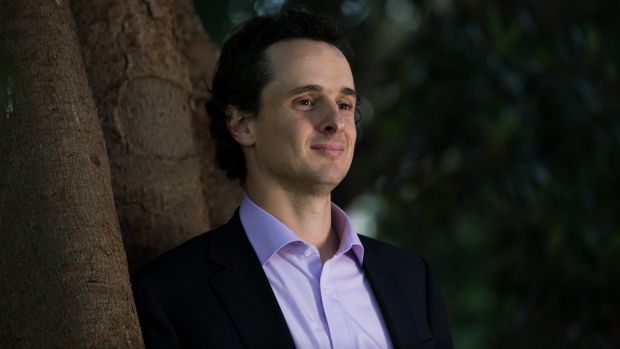
Tom Cowan had chronic back pain but used cognitive behavioural therapy to rid himself of the pain. Photo: Janie Barrett
It got to the point where Tom Cowan’s back pain was so severe that anticipating the 100 metre walk from his car to the doctor’s rooms threw him into a spin.
Though he was taking painkillers and wearing a back brace, sitting, standing and walking were agonising and he had spent almost a year lying flat on his back.
“You have a physical problem that’s healed, but a brain that didn’t adjust.”
So he was dubious when a pain clinician suggested a good part of the pain was in his head.
“He was basically saying, ‘Yes, you’ve got a physical problem but it’s actually now a mental problem’,” Mr Cowan said.
“I thought he was bonkers.”
Cognitive behaviour therapy, where patients are taught to change their “unhelpful” thinking, has shown in studies to be one the most effective treatments for chronic pain, which affects one in five Australians.
But with average national wait times of 150 days to get into pain clinics, specialists are pushing for more GPs to be trained in applying the therapy, which is usually conducted by psychologists.
The GPs would lead a multidisciplinary team of physiotherapists, occupational therapists, surgeons and psychologists.
Mr Cowan, then 24, had consulted 30 doctors before he approached the pain clinic at Royal North Shore Hospital, all of whom had thrown up their hands.
But during his three weeks at the Royal North Shore Hospital’s pain clinic, he used a stopwatch to build up the amount of time he could spend sitting upright – first for one minute at a time, to be extended by 10 seconds each day.
“The concept is that, along with a session with a psychologist doing relaxation and meditation type techniques, you effectively retrain your brain to do things,” Mr Cowan said.
“The way [the doctor] described it to me was my problem was like someone who has had their leg amputated. How can they have an itchy toe when they don’t have a leg?
“You have a physical problem that’s healed, but a brain that didn’t adjust.”
Unrelieved pain costs the Australian economy $34 billion annually in lost workforce participation and forced retirement among other expenses.
Pain Australian chief executive Lesley Brydon will tell the National Rural Health Conference in Darwin later this month that training GPs in pain management including CBT would be a game changer in addressing the growing burden of chronic pain.
In NSW, where the government has built five new rural pain clinics since 2012, the waiting list is still 128 days.
“There’s ample evidence that if people don’t get timely access to help their pain gets worse and their condition gets more expensive to treat, because it probably requires surgery or other forms of more expensive pain therapy,” Ms Brydon said.
Unlike surgery, cognitive behavioural therapy is not subsidised by Medicare.
The University of Sydney medical school’s director of pain management programs Michael Nicholas says it is possible for clinicians to train people to manage their pain.
Strategies include pacing the level of activity, setting goals, relaxation techniques and challenging unhelpful beliefs about pain.
“With chronic pain, the cause has long gone and you’re left with the effects on your central nervous system,” Professor Nicholas said.
“Not everyone with back pain is disabled but a lot of them are and one of the things that goes along with greater distress with pain is to think about it in ways that are understandable but not helpful.”
Bathurst GP Ian Thong, who trained in CBT at his own expense, claimed a 60 per cent success rate in those of his patients who adopt it.
But he conceded that he was a rare breed among GPs.
“They think of painkillers and medication and surgery and they don’t see the value in cognitive therapies … whereas it’s very, very useful.”
Mr Cowan is now prepared to say his back is cured, though it was a difficult process.
“It took in the end 10 years, but I can ski, play golf, sit, run, walk. There’s nothing I can’t do, but everything was done incrementally.”
A convert to CBT, he is amazed that it is not subsidised by Medicare so more people could access it.
“You can have 10 different surgeries on your back that don’t work and they’ll fund it but they refuse to fund this side of things.”
Common elements of cognitive behavioural therapy for self-management of chronic pain
1. Assess the problem and identify biological and psychological contributing factors
2. Identify goals
3. Break the goals into smaller achievable steps (eg time spent sitting, walking, standing), and work out steps to achieve them such as gradual exposure
4. Work out options for dealing with obstacles such as pain flare-ups and catastrophising, such as relaxation and problem solving
5. Terminate treatment once goals are achieved
(adapted from Pain: Clinical Updates February 2015 by Michael Nicholas)
